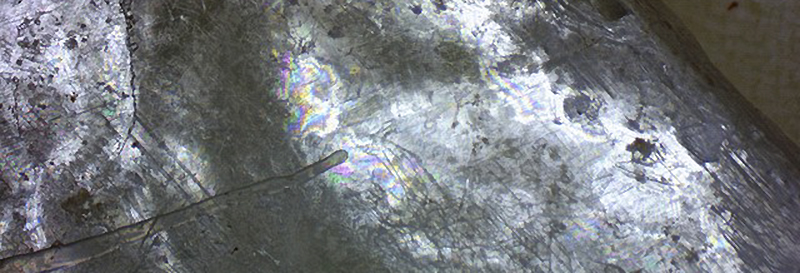Selenite
Selenite is one of the three forms of pure natural crystalline gypsum, with one other, satin spar having a very similar features, the other natural form is gypsum rock which is commonly crushed and used in the manufacture of plaster products.
In old English gypsum was referred to as spear stone (spærstn) because of its crystal spear-like projections, of which selenite and satin spar have the most notable. Selenite crystals are much rarer than satin spar crystals, whilst gypsum rock is relatively common. Other forms of crystalline gypsum are known as tabular gypsum, which is normally shorter blocks of satin spar, whilst desert roses, form with grains of sand and gypsum flower which are referred to as crystal habits.
Selenite crystals form in large flat, transparent crystals, often called plates or windows, whilst Satin Spar crystals are fibrous and white, often appear as raw rulers or wands which can be polished into palmstones or spheres. The naturally large flat transparent form of selenite crystals, might also be called Lapis Specularis a form of selenite that was put to good use by the Romans in the construction of specularia (sometimes referred to as specularium), which included the first types of windows before the development of glass for use in glazing, it was used to construct Roman winter gardens for horticulture.
[edit] Related articles on Designing Buildings
- Botanical gardens
- Construction materials.
- Conservatory.
- Drywall construction.
- Garden greenhouse.
- Gypsum.
- Hydroponics and buildings.
- Lime plaster.
- Minerals of local and national importance.
- Mortar.
- Permission for mining or working of minerals.
- Plaster.
- Specularium.
- The secret life of the Georgian garden.
- Types of glass.
- Winter gardens.
Featured articles and news
Homes England creates largest housing-led site in the North
Successful, 34 hectare land acquisition with the residential allocation now completed.
Scottish apprenticeship training proposals
General support although better accountability and transparency is sought.
The history of building regulations
A story of belated action in response to crisis.
Moisture, fire safety and emerging trends in living walls
How wet is your wall?
Current policy explained and newly published consultation by the UK and Welsh Governments.
British architecture 1919–39. Book review.
Conservation of listed prefabs in Moseley.
Energy industry calls for urgent reform.
Heritage staff wellbeing at work survey.
A five minute introduction.
50th Golden anniversary ECA Edmundson apprentice award
Showcasing the very best electrotechnical and engineering services for half a century.
Welsh government consults on HRBs and reg changes
Seeking feedback on a new regulatory regime and a broad range of issues.
CIOB Client Guide (2nd edition) March 2025
Free download covering statutory dutyholder roles under the Building Safety Act and much more.
Minister quizzed, as responsibility transfers to MHCLG and BSR publishes new building control guidance.
UK environmental regulations reform 2025
Amid wider new approaches to ensure regulators and regulation support growth.
BSRIA Statutory Compliance Inspection Checklist
BG80/2025 now significantly updated to include requirements related to important changes in legislation.























